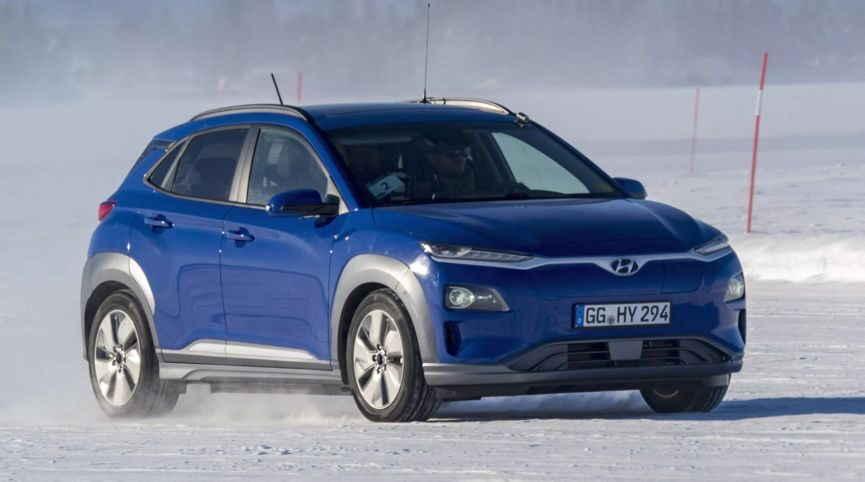Introduction
Recently, it has become a trend to rely on hometown neighbors for success in the automobile industry.
As a global top 10 brand with powerful hometown neighbors like LG and Samsung, Hyundai Kia Motors, surprisingly, seems to lack ambition and success in the field of new energy where hometown neighbors excel.
While Hyundai Kia Motors can easily make it into the global top 10 in terms of car sales, either individually or collectively, it usually ranks outside the top 15 in the field of new energy vehicles.
Industry insiders generally believe that Toyota, as a strong representative of Japanese brands, is rather slow in terms of action in the field of new energy. However, Hyundai Kia Motors, as a representative of Korean brands, is even slower and almost invisible, with few topics that people are willing to talk about.
Can you recall any amazing concept cars released by Hyundai Kia Motors?
Or any stunning black technology?
Or any revolutionary and disruptive strategies that shook the world?
None.
However, in terms of technology orientation and corporate strategy, Hyundai Kia Motors is infinitely similar to Toyota, aside from the fact that it has fallen behind in terms of brand level.
Therefore, when we talk about how conservative Toyota’s new energy pace was in the past, then Hyundai Kia Motors, which has been mimicking Toyota’s behavior, is even harder to notice.
As we all know, Hyundai and Kia are sister brands. Based on different brand positioning, their products have differences in appearance, configuration, price, and positioning, but they follow the rhythm of two products on the same platform, and can be equally matched in terms of power performance and quality. The following will specifically introduce two representative products, IONIQ and KONA.
IONIQ and KONA: Two Representative Works Without Obvious Shortcomings
IONIQ and KONA are the only two new energy products developed by Hyundai Kia Motors on the new platform.
IONIQ is a watershed for Hyundai Kia Motors to switch from the hydrogen fuel cell technology route to the pure electric route. Yes, just like Toyota before 2015, Hyundai Kia Motors was obsessed with hydrogen energy route. There were only three brands in the world that could independently develop hydrogen powered car products – Toyota, Hyundai, and General Motors.
IONIQ was launched in South Korea in 2016, and once it came out, it was given the title of competing with Puris and Leaf: Puris, the world’s energy-saving car sales champion, and Leaf, the world’s pure electric car sales champion. Therefore, it is believed that Hyundai Kia Motors had high expectations for the birth of IONIQ.
IONIQ offers three power options: pure electric, plug-in hybrid, and hybrid.
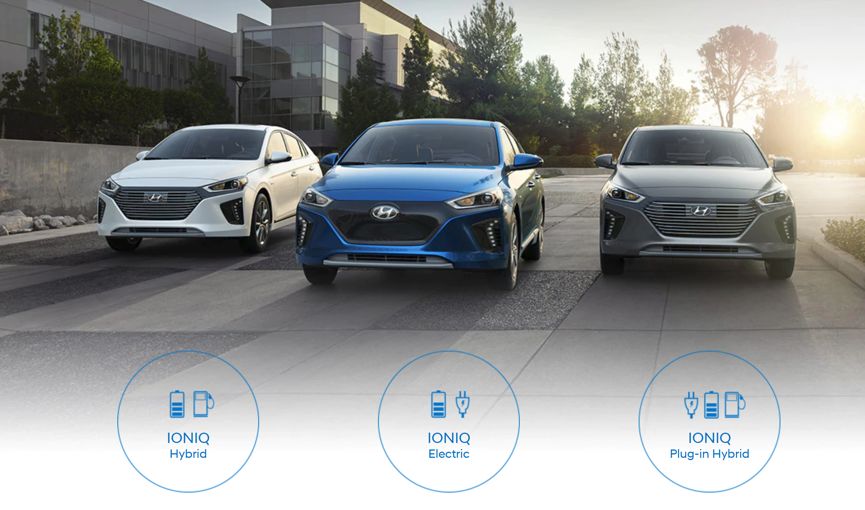
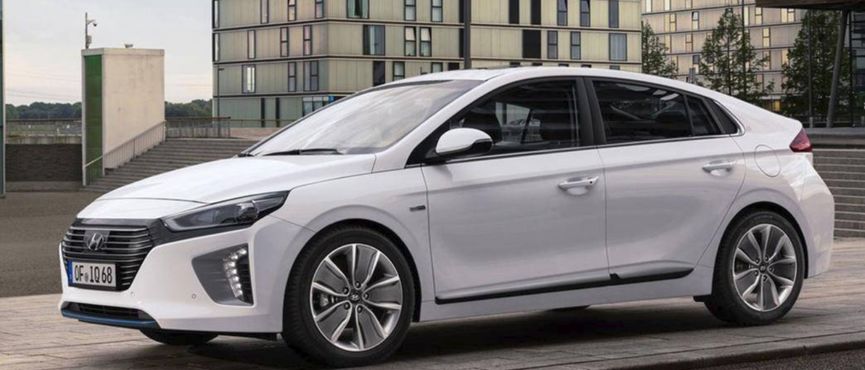
The pure electric version of IONIQ is equipped with an 88 kW engine, a 28 kWh battery pack, a range of 200 kilometers, a top speed of 165 kilometers per hour, supporting 100 kW fast charging, which can be charged to 80% in 25 minutes. Among the five cars tested by the Norwegian Charging Association, the charging rate of IONIQ Electric is also the highest, up to 70 kW, and can be maintained for a long time. In terms of price, the pure electric version of IONIQ is priced at $29,500, while the Leaf is $29,990.
To some extent, IONIQ did not disappoint our expectations.
IONIQ should be the world’s first new platform model that can simultaneously take into account pure electric, hybrid and plug-in hybrid power , especially it entered mass production in 2016. However, Toyota, which established an electric vehicle business division in a hurry in 2016 and released an electric strategy blueprint, hasn’t launched any pure electric cars among the tens of millions of cars in the world.
In addition, the IONIQ EV version has maintained the record of champion of the 2016 and 2017 US EPA energy-saving tests since its launch in 2016.
The previous 42HOW article “Ranking of 56 Pure Electric Cars by Energy Consumption per 100 Kilometers” has compared EPA’s energy consumption in detail, and also mentioned that IONIQ is the most energy-saving model recognized by the EPA. Of course, there are reports claiming that this record was only maintained for a short period of time, as Puris quickly refreshed the energy consumption per 100 kilometers.
Nevertheless, IONIQ EV is still the most energy-efficient pure electric car.
IONIQ EV’s energy consumption per 100 kilometers is 15.5 kWh, and the results for 2017 and 2018 are consistent. In comparison, the energy consumption of the 75 kWh version of the 2018 Tesla Model 3 is 16.2 kWh, ranking second.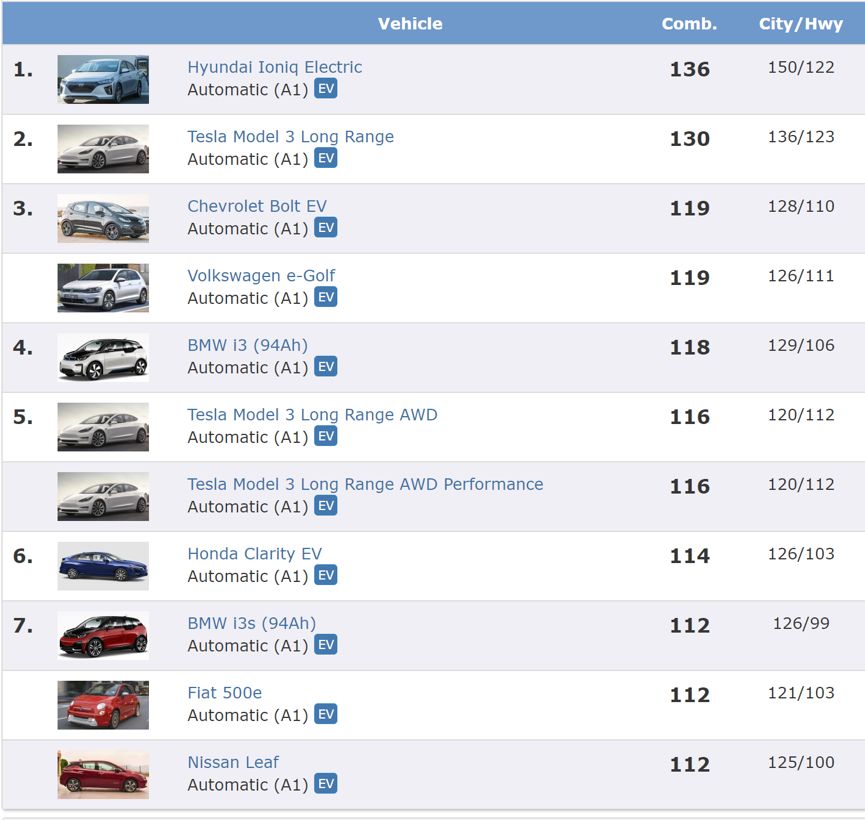
TOP Gear’s evaluation of IONIQ EV was that it looks good, it’s a bit faster and has more space than the Leaf and it’s a bit cheaper, but overall, it lacks driving passion.
In February of this year, the Norwegian Electric Vehicle Association conducted ice and snow tests on five current popular electric vehicles, which were the Leaf, e-Golf, Ioniq Electric, Opel Ampera-e (Chevy Bolt EV), and BMW i3. The test was conducted through 700 kilometers of driving on different roads in extreme cold environment to test the power consumption, charging speed, and driving performance of each vehicle.
The conclusion drawn by the organizers was that considering the comprehensive factors of endurance, charging speed, and handling performance, the champion was the IONIQ Electric. It achieved a similar driving range (190 KM) to the Leaf and e-Golf with 28 degrees of battery power, and its charging rate can reach 45KW. Coupled with its relatively stable handling performance, although it cannot be considered perfect, it has no obvious shortcomings.
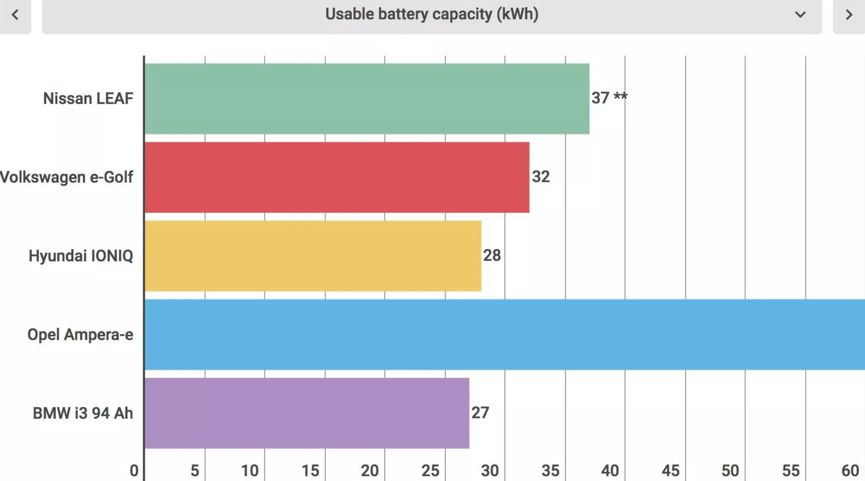
These two evaluations can be said to be very objective. Perhaps it is precisely the product orientation of modern Kia: practical and uninteresting. It has competitive pricing, lower energy consumption, average handling performance, and a decent appearance.
But modern’s estimation of IONIQ’s market performance was insufficient. In mid-2017, Korean media reported that LG Chemical was unable to meet the battery demand of modern IONIQ because the production plan established by Hyundai Group before mass production was 1800 units per month, and it had only ordered 7000 battery PACK from LG. However, IONIQ immediately became the sales champion when it was launched in Korea, and many customers had to wait for three or four months to pick up their car. In May of this year, modern dealers were informed that the sales of the 2018 IONIQ would be suspended due to a global shortage of batteries.
To summarize the reasons for IONIQ’s low energy consumption: high battery density, low vehicle design resistance (0.24), and many energy-saving configuration designs (for example, there is a detail mentioned by the media, which is that only the driver can choose the “Driver Only” mode when not carrying passengers, which only opens the air outlet of the driver’s seat, demonstrating the subtlety of Koreans).The shortcoming of IONIQ is the range, with a pure electric range of only 200 kilometers. It doesn’t sound very impressive, even though most people’s daily urban commute doesn’t exceed 200 kilometers. However, Hyundai promised to develop a high-range version.
However, they then introduced a different car: a compact pure electric SUV, KONA.
KONA comes in two versions, 40 kWh and 64 kWh, with ranges of 300 kilometers and 470 kilometers respectively, and its acceleration can reach 7.9 seconds for 0-100 km/h, with a top speed of 167 kilometers per hour. It supports fast charging, which can charge it up to 80% in one hour.
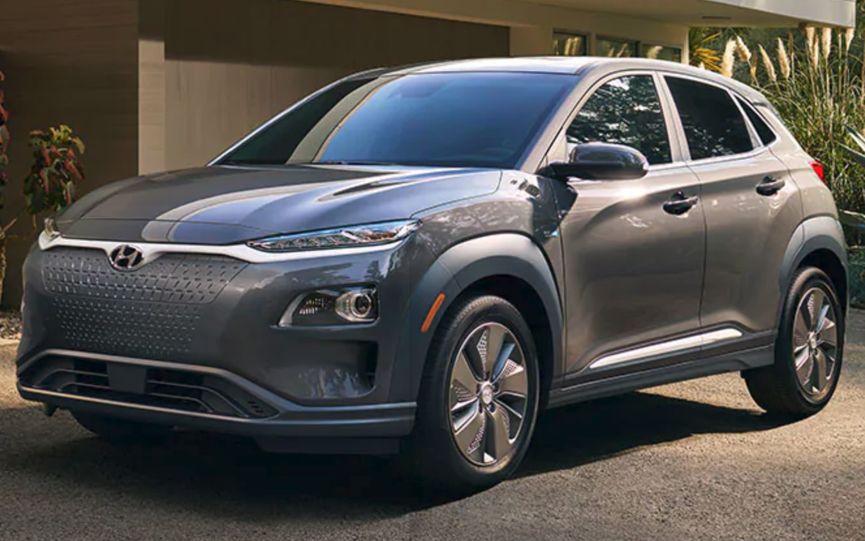
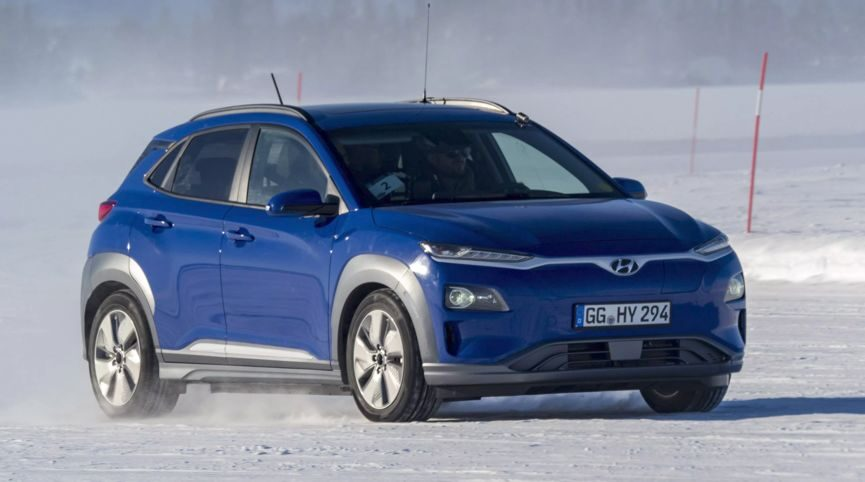
KONA EV will be launched in 2019, with the price yet to be announced. Foreign media speculate that the price will be around $30,000, although earlier Norwegian media reported a local price of about $40,000 for KONA.
The difference between $30,000 and $40,000 is significant. We can only wait and see.
After all, overseas media widely regard KONA as the most affordable electric vehicle with the longest range, except for Tesla’s models (you still can’t buy a $30,000+ version of Model 3). Here, they are referring to the 64 kWh version.
Compared with IONIQ, although KONA’s energy consumption is slightly higher, it still wins with 120 MPGe compared with Bolt’s 119 MPGe, and KONA also has an additional 40 kilometers of range. Hyundai has also conducted snow and ice tests on KONA.
In terms of range, price, and fast charging, KONA offers sufficient guarantee.
This is the main reason why various media outlets have given KONA high praise. However, if you want to find a strong personality or highlight, there isn’t one.
If KONA can maintain the advantage of IONIQ with the best price-performance ratio, Hyundai may gradually expand its presence in the field of new energy vehicles, which is more important than anything else since production and promotion are key.
Hyundai’s new energy product planning is very practical, just like Toyota and Honda’s consideration for pure electric vehicles, they value the convenience of charging and energy consumption, not simply pursuing longer range. By launching two products with such high efficiency at once, the Koreans’ strength in the field of new energy cannot be underestimated.On the one hand, batteries from LG Chem can provide sufficient competitive advantages in terms of density, energy consumption and safety, while on the other, Hyundai’s dedication and strength in styling design, driving systems and configuration ensure outstanding cost performance of the product. It seems that besides being too conservative or inaccurate in predicting the market, there are no major bugs in Hyundai’s new energy vehicles.
In fact, from 2015 to 2017, Hyundai-Kia had to publish new energy strategies at the end of each year, and there was some confusion in the information, making it unclear whether there were different statements in the same strategy or constant adjustments. Compared with the rigorousness of Germany and the meticulousness of Japan, it seems that the Korean automakers are lacking in some macroscopic planning. Considering their conservative market estimations and slow reactions, it seems that they need to take faster actions and have new ideas.
User company NIO went public with its suspense
Compared to 100,000 Weima EX5s, I am looking forward to Weima EX6 | 42HOW on site

This article is a translation by ChatGPT of a Chinese report from 42HOW. If you have any questions about it, please email bd@42how.com.
